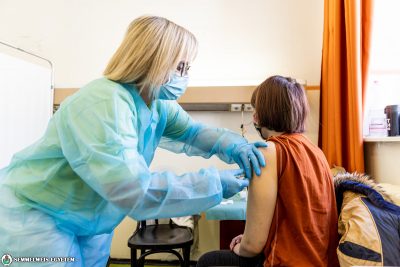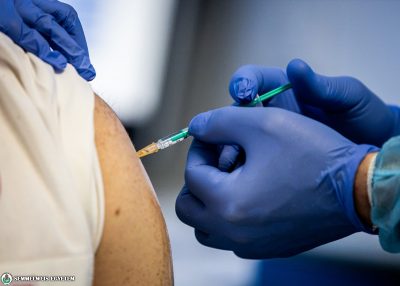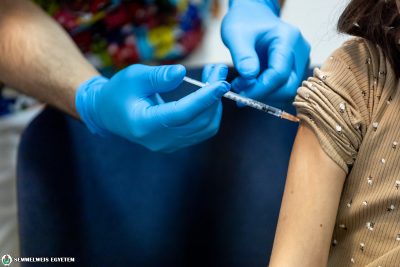The most recent publications support the hypothesis that chloroquine may improve the clinical outcome of patients who are infected with SARS-CoV-2.
In the absence of known effective therapy, and due to the current epidemiological situation, testing for hydroxychloroquin / chloroquine has arisen as it has been previously described as a potent inhibitor for many coronaviruses, including SARS-CoV-1.
Chloroquine has been used as a first line therapeutic and prophylactic agent in the treatment of malaria for decades and it is one of the most frequently prescribed medicines in the world. The pharmacokinetics of hydroxychloroquine and chloroquine are similar: they exhibit rapid gastrointestinal absorption and renal elimination, although their clinical indications and toxic doses are different. In the treatment of malaria, chloroquine can be used at high doses for short periods of time (although it is toxic at high doses) or at low doses for longer periods whereas hydroxychloroquine can be tolerated at higher doses for longer periods of time. Furthermore, chloroquine can also be used in the treatment of autoimmune diseases.
The phylogenetic analysis of SARS-CoV-2 has shown that it is distinct from (it is nucleotide identical in ∼80%) but it is still related to SARS-COV-1.
The antiviral properties of chloroquine
This substance has been shown to be a versatile bioactive agent in vitro against a number of RNA viruses (such as polio, rabies, HIV, Hepatitis A virus, Hepatitis C virus, influenza A and B viruses; influenza virus type A H5N1; Chikungunya virus, Zika virus, Ebola virus, Lassa virus, Hendra virus, Nipah virus, and against the Crimean-Congo haemorrhagic fever) and it has been shown to be a versatile bioactive agent against certain DNA viruses (such as Hepatitis B and Herpes Simplex).
The in vitro antiviral properties of chloroquine have been demonstrated in the treatment of some patients infected with the virus, but these have not been demonstrated in a reproducible clinical study.
It showed a potential therapeutic effect related to coronaviruses such as SARS-CoV-1 and it inhibited the replication of HCoV-229E in an epithelial lung cell culture in vitro.
Potential antiviral effect of chloroquine against SARS-CoV-2
A recent paper reported that both chloroquine and the antiviral drug remdesivir inhibited SARS-CoV-2 in vitro and suggested these drugs be assessed in infected patients.
It has been recommended by CNCBD (China National Center for Biotechnology Development) and, based on specific experiences, chloroquine has proven to be promising against COVID-19. Its effects have been studied in Beijing, Hunan and Guangdong provinces. Preliminary reports have shown that approximately 100 patients receiving chloroquine treatment experienced a faster reduction of fever, a visible improvement in the lungs based on CT scans, and a shorter recovery time compared to controls (without severe adverse events). Based on these, it was recommended that chloroquine be included in the SARS-CoV-2 treatment guidelines. However, cumulative dose-related side effects (macular retinopathy and cardiomyopathy) are not negligible. At least 10 clinical trials are currently testing the therapeutic effect of chloroquine anti-COVID-19.
Mode of action of chloroquine
- chloroquine blocks the entry of the virus into the cell by preventing it from binding to its cell surface receptor: the potent anti-SARS-Cov-1 effect in vitro (on Vero cells) is explained by inhibiting glycolysis of the cell surface receptor (ACE2, angiotensin converting enzyme).
- inhibits early phase of viral replication by disrupting pH-dependent endosome-mediated virus entry
- prevents post-translational modification of viral proteins
- influences the maturation of viral proteins and the recognition of viral antigen by dendritic cells
- its effects on the immune system is through regulation of cellular signaling and pro-inflammatory cytokines
Chloroquine has been shown to be capable of inhibiting the in vitro replication of several coronaviruses. Recent publications support the hypothesis that chloroquine can improve the clinical outcome of patients infected by SARS-CoV-2. The multiple molecular mechanisms by which chloroquine can achieve such results should be further explored. Lately SARS-CoV-2 has been found to utilise the same cell surface receptor ACE2 (expressed in lung, heart, kidney and intestine) as SARS-CoV-1. It may be hypothesised that chloroquine also interferes with ACE2 receptor glycosylation thus preventing SARS-CoV-2 binding to target cells.
Alexandra Fábián
Source: New insights on the antiviral effects of chloroquine against coronavirus: what to expect for COVID-19?
Translation: Department of Languages for Specific Purposes


